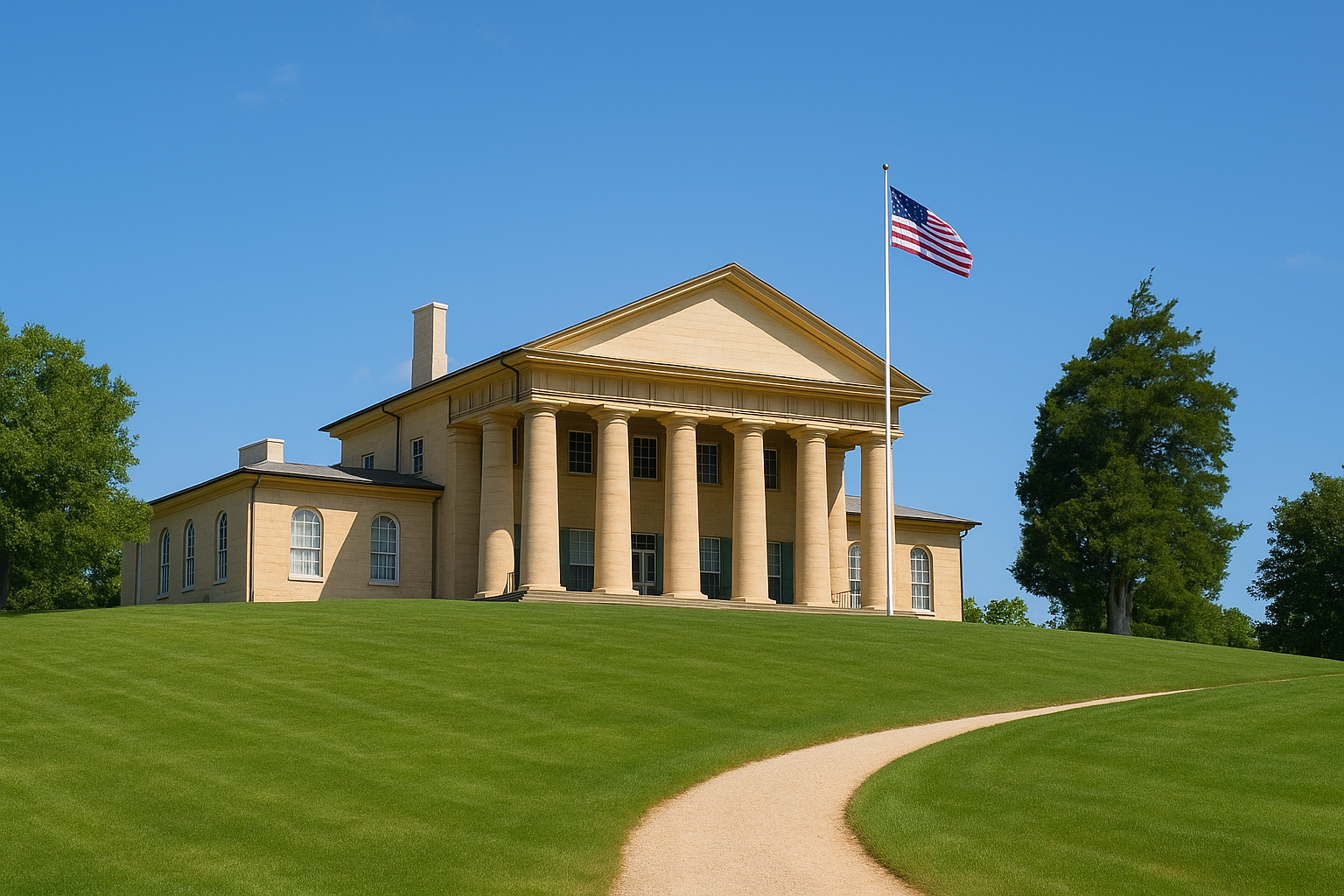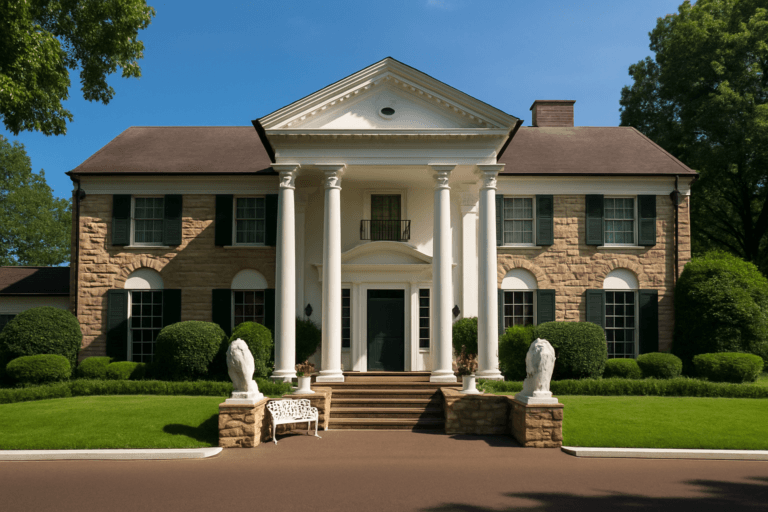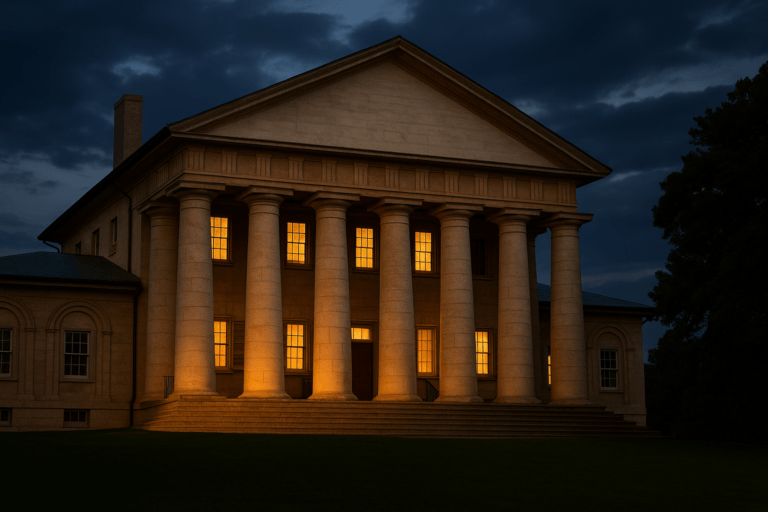Arlington House DC: Where The Past Overlooks The Present
If you think Arlington House DC is just another old mansion, think again. Perched high above the nation’s capital, this historic home offers one of the most stirring views in Washington, DC—and a story that stretches from George Washington’s legacy to the heartbreak of the Civil War. Whether you’re a history buff, a curious traveler, or just looking for a place that feels truly meaningful, Arlington House invites you to step inside and experience a piece of the past you can still walk through.
🎧 What You’ll See:
very room, walkway, and view at Arlington House has a story to tell—and if you slow down and look closely, you’ll notice the rich details that bring the estate to life:
- The Drawing Room
Step into the formal drawing room, where the walls are lined with 19th-century furnishings and display cases filled with relics linked to George Washington. These artifacts, collected by his step-grandson George Washington Parke Custis, were once part of a personal shrine to the first president. - Lee’s Study
Don’t miss Robert E. Lee’s private study, left much as it was when he departed the estate in 1861. The simplicity of the room offers a glimpse into the life of a man caught between loyalty to country and loyalty to home.
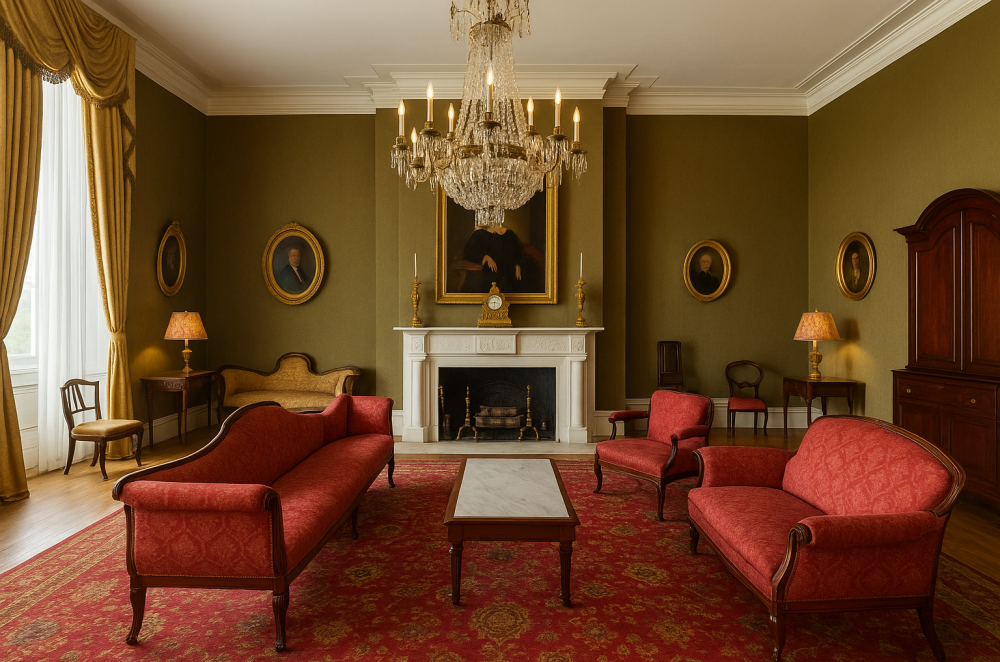 The formal drawing room at Arlington House showcases antebellum elegance and includes several relics linked to George Washington.
The formal drawing room at Arlington House showcases antebellum elegance and includes several relics linked to George Washington.
- The Enslaved Quarters
Nearby, the contrast is striking. The restored quarters of the enslaved workers provide a stark, powerful counterpoint to the rest of the home. These spaces reveal the labor and lives that made the estate’s grandeur possible. - The Gardens and Grounds
Outside, follow shaded walkways through gardens that once hosted family gatherings and now stand beside some of the earliest graves in Arlington National Cemetery. The beauty of the grounds blends with solemnity as you transition from private estate to national memorial.
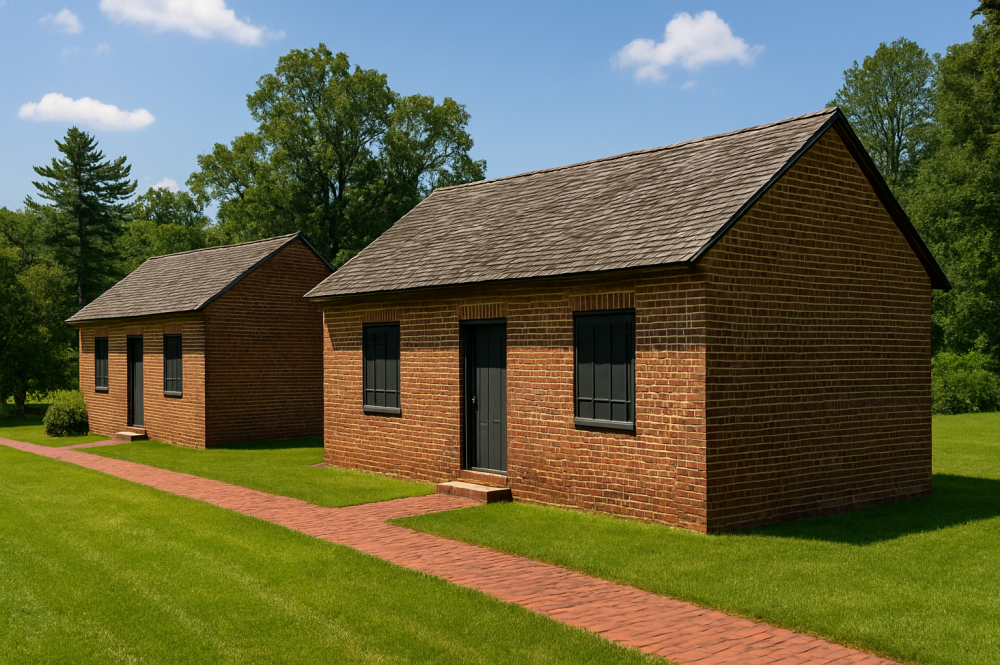 These brick quarters housed the enslaved workers who built and maintained Arlington House, now carefully preserved to reflect their living conditions.
These brick quarters housed the enslaved workers who built and maintained Arlington House, now carefully preserved to reflect their living conditions.
And of course, take a moment on the front portico, where the sweeping view across the Potomac River to the Lincoln Memorial is unforgettable—and intentionally framed to echo the complex relationship between Arlington House and the evolving American identity.
🌟 Why It’s Worth the Stop :
There are plenty of reasons to make Arlington House part of your DC itinerary—here are just a few highlights that make it memorable:
- Unbeatable Views
The front portico offers a breathtaking, unobstructed view of the National Mall, with the Lincoln Memorial perfectly framed in the distance. It’s one of the few places in DC where you can feel above the bustle, physically and historically. - Unexpected Layers
From Washington relics and antebellum furnishings to personal items left behind by the Lee family, the home tells many stories in a single walk-through. Staff and rangers often share unexpected anecdotes—including whispered ghost stories that hint at the emotional weight the house carries.
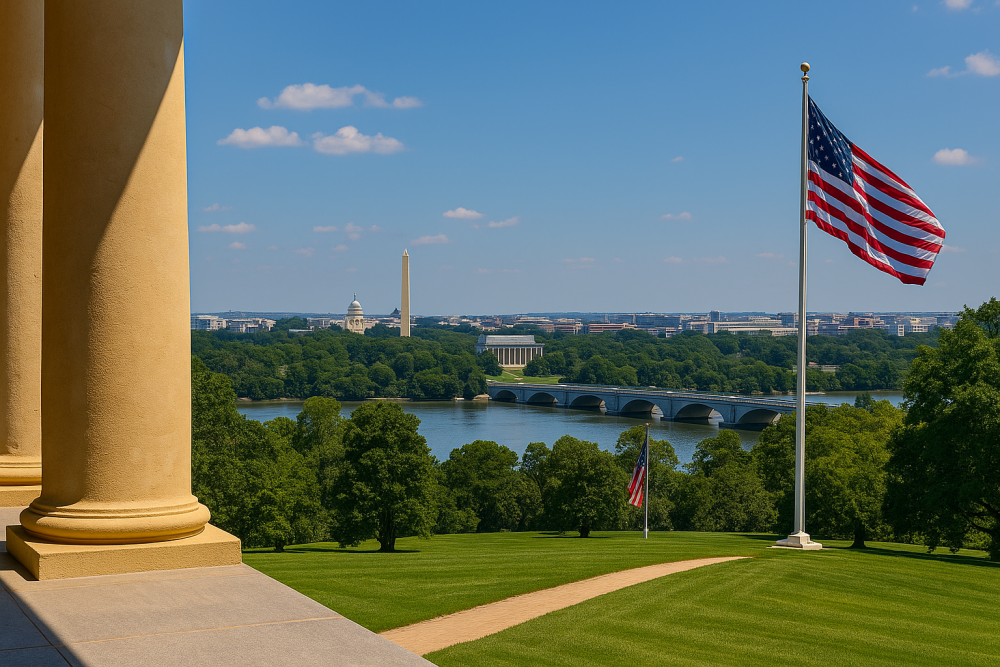 Arlington House’s portico perfectly frames Washington’s most iconic landmarks—an intentional and symbolic alignment with the nation’s history.
Arlington House’s portico perfectly frames Washington’s most iconic landmarks—an intentional and symbolic alignment with the nation’s history.
- Powerful Contrasts
One moment, you’re standing in a grand parlor; the next, you’re peering into a humble room that once housed enslaved laborers. These physical juxtapositions are what give the home its lasting emotional impact. - It’s More Than a Museum
Arlington House is not frozen in time—it’s a place that continues to evolve. Recent interpretive efforts by the National Park Service are working to tell a fuller story, including long-overlooked narratives of the enslaved and their descendants.
🔎 Hidden Details to Look For During Your Visit There’s more to see than meets the eye—if you know where to look:
🕵️♀️ Don’t Miss: Look closely at the brickwork near the kitchen wing—you may notice hand-carved initials etched into the surface, likely left by those who worked the estate long ago.
🪑 Look For: Inside the house, keep an eye out for furniture labeled “Custis Relics”—these pieces are believed to have belonged to George Washington, though historians still debate their authenticity.
🌹 Take Note: In the garden, you’ll find a rose bed surrounded by headstones—what began as a place of beauty became the first burial site of what is now Arlington National Cemetery.
👀 Pause Here: From the front portico, don’t rush the moment. The view across the Potomac toward the Lincoln Memorial is deliberately aligned, a visual dialogue between two spaces with intertwined histories.
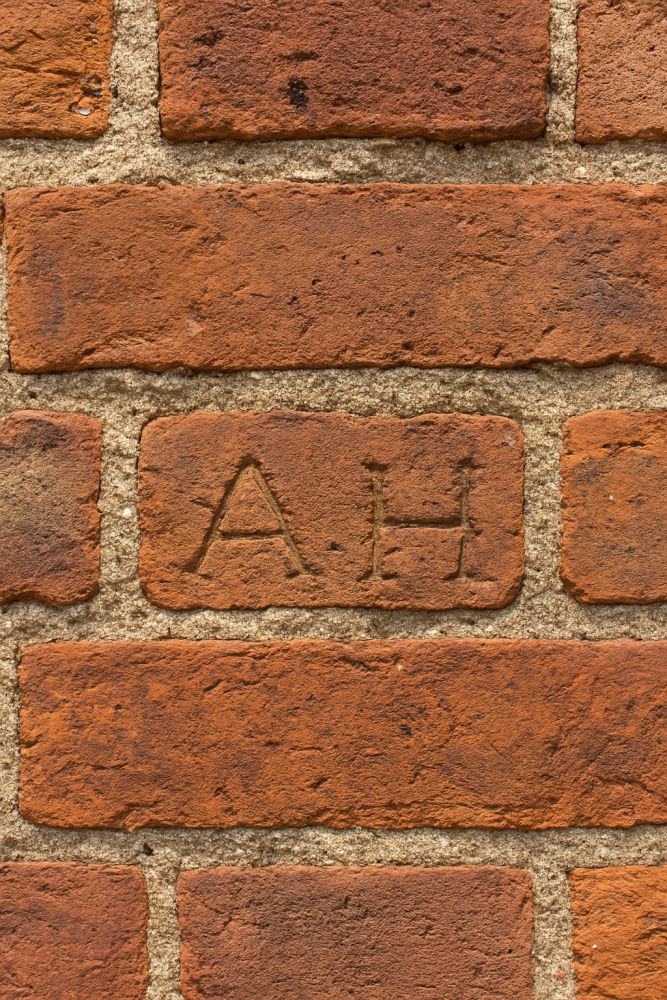 Some bricks at Arlington House bear carved initials—subtle traces of lives and labor that once shaped the estate.
Some bricks at Arlington House bear carved initials—subtle traces of lives and labor that once shaped the estate.
🧳 Plan Your Visit :
Arlington House is operated by the National Park Service and welcomes visitors year-round, with free admission. You can explore the home and grounds on your own, taking in the exhibits at your own pace, or join one of the Park Ranger-led interpretive talks that bring the site’s stories to life. Topics often include the Civil War, the Lee family’s history, and the lives of the enslaved individuals who made this home possible.
🔗 Official Tour Info
For the latest information on hours, accessibility, guided tours, and event schedules, visit the National Park Service’s official Arlington House page:
👉 Arlington House – The Robert E. Lee Memorial (NPS.gov)
The mansion sits at the top of a gentle hill, so wear comfortable walking shoes and be ready for a short uphill trek. The reward is worth it—not just the incredible view, but the chance to walk through a home that has seen generations of triumph, tension, and transformation.
🕊️ A Place of Reflection and Reckoning: Arlington House stands not just as a former home or museum, but as a space where American ideals, contradictions, and reckonings continue to collide. It invites reflection on service, sacrifice, and how we choose to remember the past. In its silence, it tells stories of a family, a nation divided, and a people whose lives were intertwined in both suffering and resilience.

